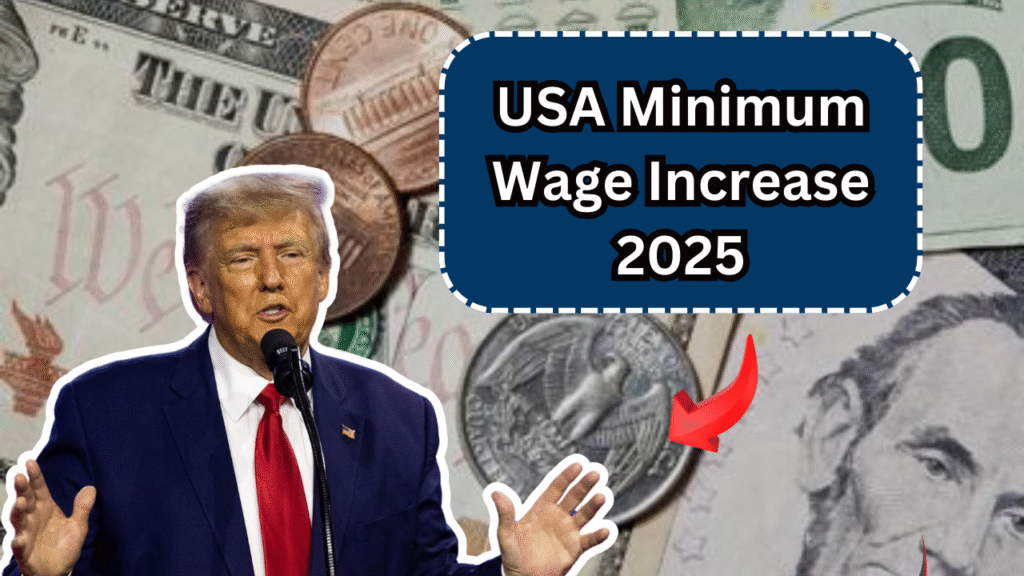As of 2025, the debate around minimum wage in the United States has intensified, with several states implementing higher rates to adjust for inflation and cost of living. While the federal minimum wage remains stuck at $7.25 per hour since 2009, many states, counties, and cities have taken matters into their own hands, introducing significant increases that workers across the nation should know about.
Here is a detailed breakdown of the new minimum wage rates in 2025, highlighting the states and cities where workers will see the biggest changes in their paychecks.
Federal Minimum Wage Unchanged Since 2009
The federal minimum wage, set at $7.25 per hour, has not changed since 2009. This stagnation has led to a growing divide, where some states have moved far ahead by enacting higher local rates, while others continue to rely on the federal baseline.
States like Alabama, Louisiana, Mississippi, South Carolina, and Tennessee still do not have a state minimum wage, meaning workers are subject to the federal rate unless local laws state otherwise. Similarly, Georgia and Wyoming technically have state minimum wages below the federal level, but by law, employers must follow the federal standard if their business falls under the Fair Labor Standards Act.
States Leading the Charge in 2025
In contrast to states sticking to the federal rate, some states have aggressively raised their minimum wages. According to Axios, OnPay, and CT Insider, these are some of the top states with the highest minimum wage rates as of 2025:
- Washington State: $16.66 per hour, the highest statewide minimum wage in the country.
- California: $16.50 per hour statewide. Cities like Mountain View and Cupertino have local rates above $18 per hour.
- Connecticut: $16.35 per hour, adjusted annually using the Employment Cost Index.
- New York: $16.50 per hour in New York City, Long Island, and Westchester County, while the rest of the state stands at $15.50.
- District of Columbia (Washington, D.C.): $17.50 per hour, with an increase to $17.95 scheduled for July 1, 2025.
State-by-State Breakdown: Who Gets How Much?
Selected States Overview
| State | 2025 Minimum Wage | Notes |
|---|---|---|
| Arizona | $14.70 | Indexed to inflation. |
| Colorado | $14.81 | Annual inflation adjustments apply. |
| Delaware | $15.00 | Reached the $15 target in 2025. |
| Florida | $13.00 (till Sept 30, 2025), then $14.00 | On track to reach $15 in 2026. |
| Illinois | $15.00 | Reached the $15 goal. |
| Maryland | $15.00 | Some counties offer higher local wages. |
| Michigan | $10.56 (until Feb 20, 2025), then $12.48 | Scheduled increase in February. |
| Nebraska | $13.50 | Gradual voter-approved increases. |
| New Jersey | $15.49 | Small employers pay $14.53. |
| Ohio | $10.70 | Applies to employers with gross receipts over $394,000. |
| Oregon | $14.70 standard; $15.95 in Portland metro; $13.70 non-urban | Adjusted by region. |
| Rhode Island | $15.00 | Reached the $15 target. |
| Virginia | $12.41 | Set to reach $15 by 2026. |
You can see the complete state-by-state breakdown on the U.S. Department of Labor official website.

Cities Outpacing State Minimums
In some cities, the minimum wage is significantly higher than even their state’s standard rate. As reported by Investopedia:
- Burien, Washington: $21.16 per hour for large employers.
- Tukwila, Washington: $21.10 per hour for large employers.
- Seattle, Washington: $19.97 per hour.
- Mountain View, California: $19.20 per hour.
- Cupertino, California: $18.20 per hour.
These cities represent the highest minimum wages in the United States for 2025.
Upcoming Increases in 2025
Several states and cities have already scheduled increases later this year:
- Florida will raise its rate to $14.00 per hour on September 30, 2025, moving closer to its voter-approved $15 by 2026.
- Oregon will increase rates on July 1, 2025, bringing the standard rate to $15.05, the Portland metro area to $16.30, and non-urban counties to $14.05.
- Washington, D.C. will increase its rate to $17.95 per hour on July 1, 2025, as per EmployerPass.
The Wage Divide Continues
Despite the momentum in several states and cities, the wage gap across the U.S. remains wide. Workers in states like Washington and California can earn nearly triple the hourly wage of those in states still bound by the $7.25 federal rate.
This inconsistency is sparking further conversations in Washington, D.C., where labor advocates continue to push for a federal minimum wage increase. However, legislative action at the national level remains uncertain, with political gridlock preventing a clear path forward.
Final Thoughts
While 2025 has brought welcome raises to millions of American workers, the reality is that where you live still largely determines your paycheck. Employees and employers alike should stay informed of both state and city-specific wage laws to ensure compliance and fair compensation.



